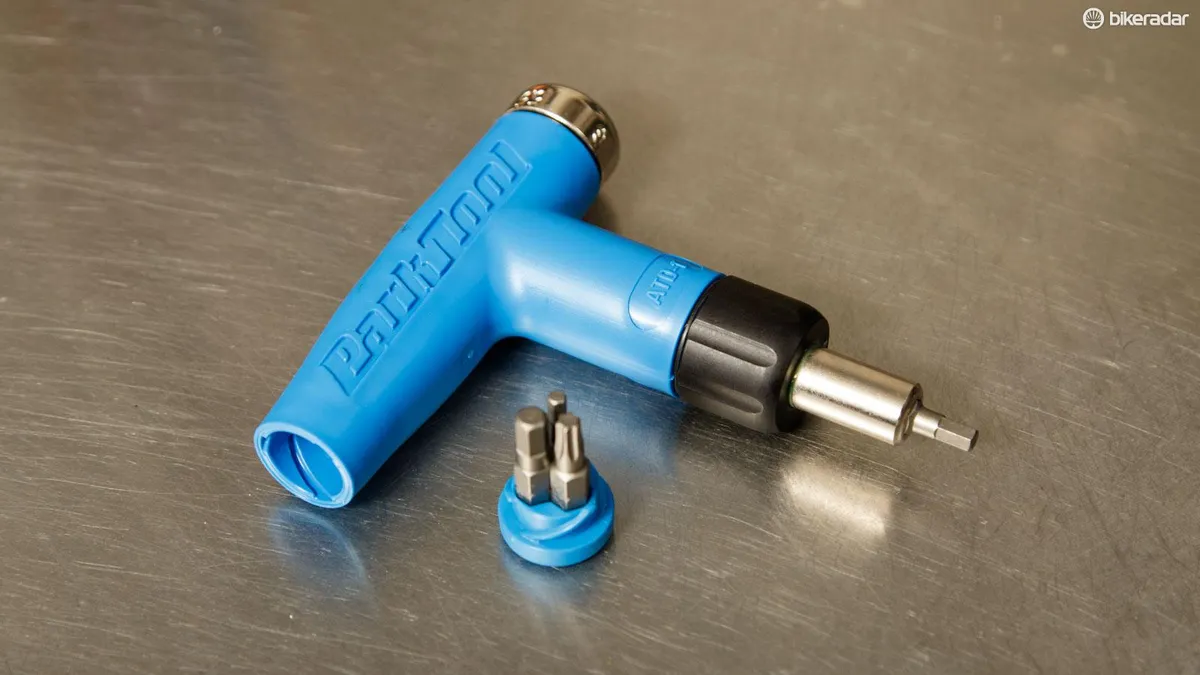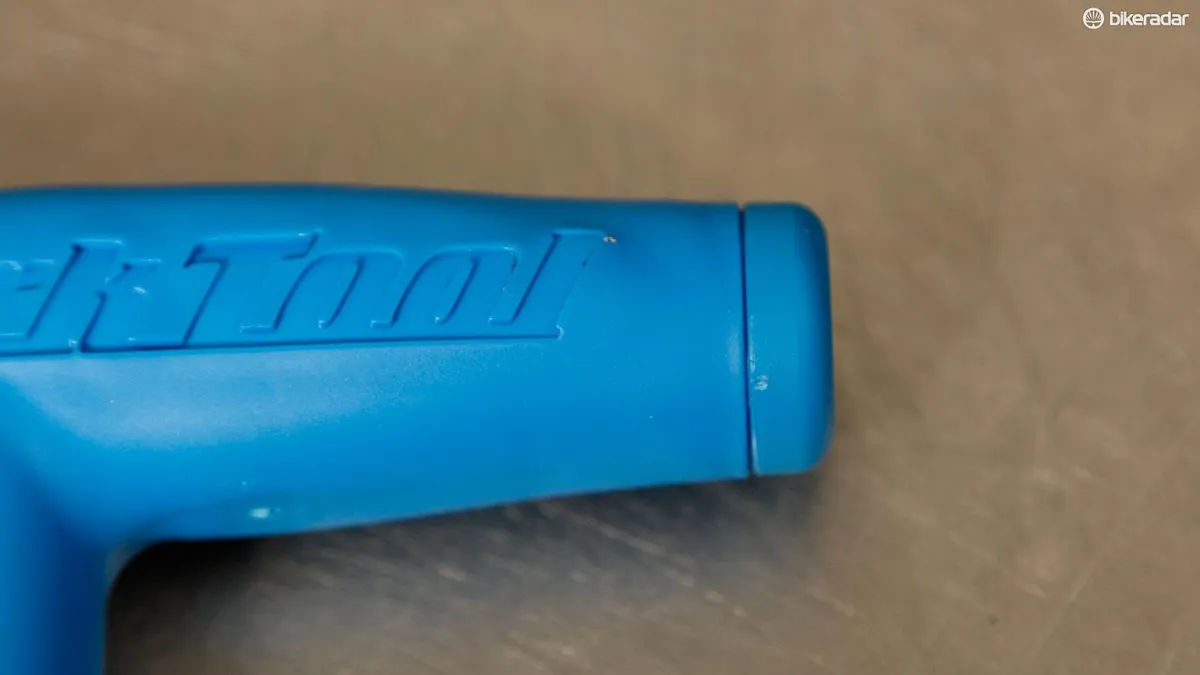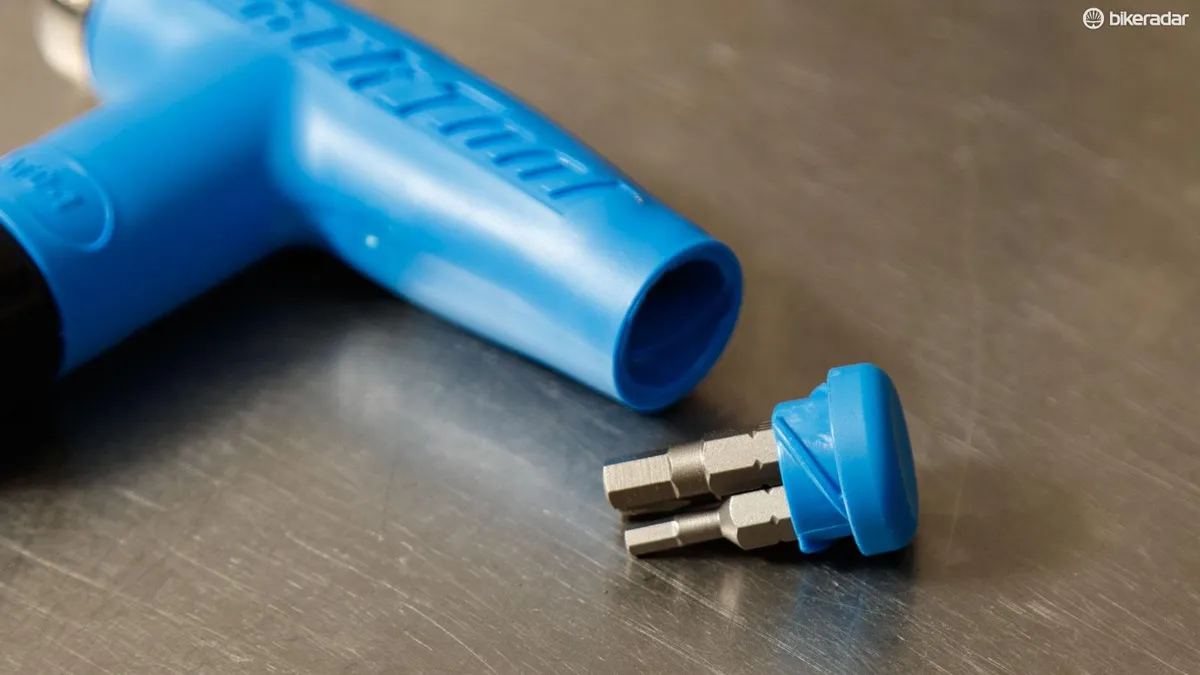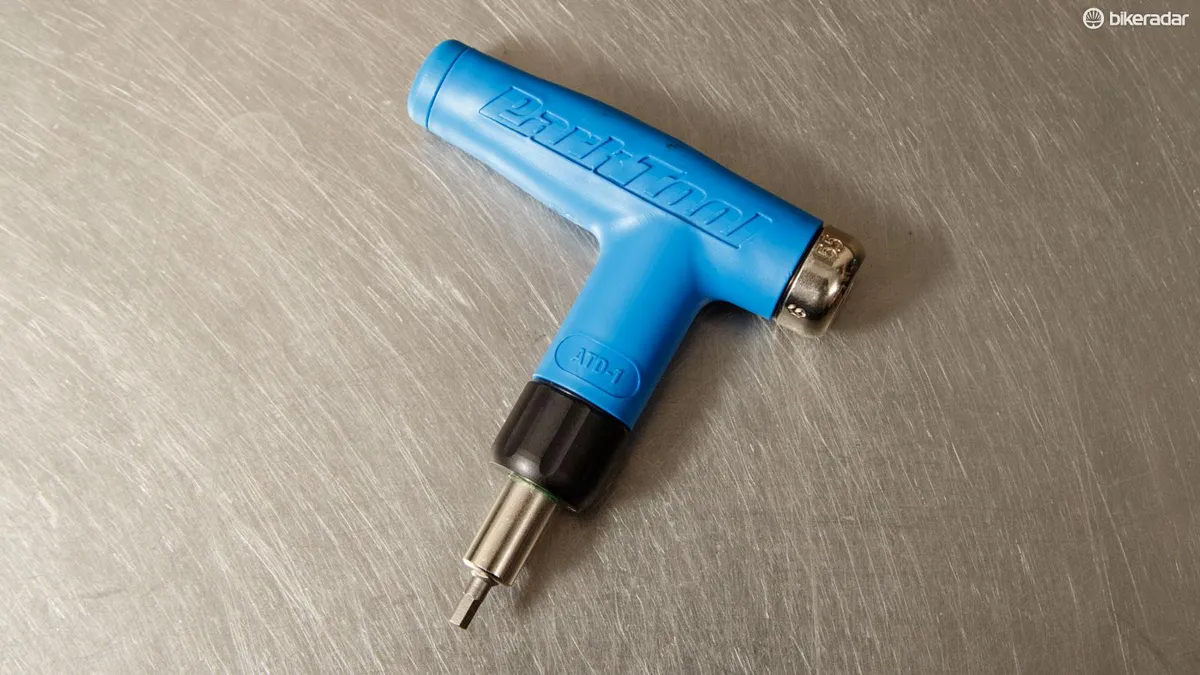Park Tool is one company that without fail always has something new to show each year. For 2016, the American cycling tool brand had more than two-dozen new items, but arguably none more exciting than the iconic blue’s first in-house designed and assembled torque wrenches.
There are four new torque wrench models in total, the first being the ‘PTD’ Preset Torque Driver consisting of 4, 5 and 6nm options. The fourth is the ‘ATD” Adjustable Torque Driver which pulls 4, 5 and 6mm torque settings into one tool.
Compared with the many wide-range torque wrenches on the market, the ATD’s 4-6Nm in .5Nm increments may seem rather limited. While it’s surely not to suit everyone, this 4-6Nm range should cover the most common uses for a torque wrench in bicycle servicing: stems and seatposts.
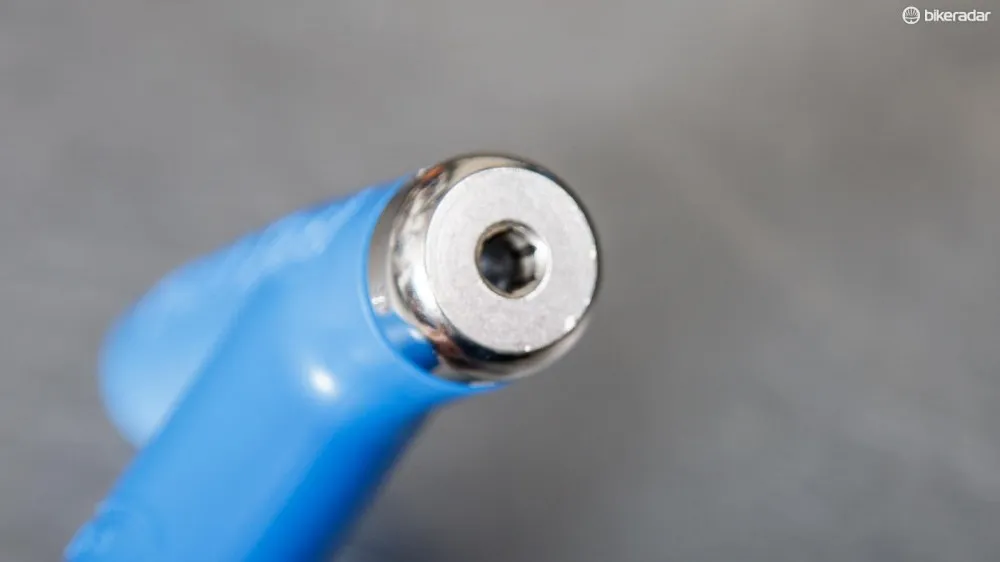
This dial adjusts torque, it's hard to turn but that's the point
Turning the chromed dial on the end of the tool’s handle switches the torque setting. A 6mm hex key may be needed to turn this snug-fitting and typically slippery dial. We suspect it’s been made this way to prevent accidental torque changes that are possible with cheaper tools.
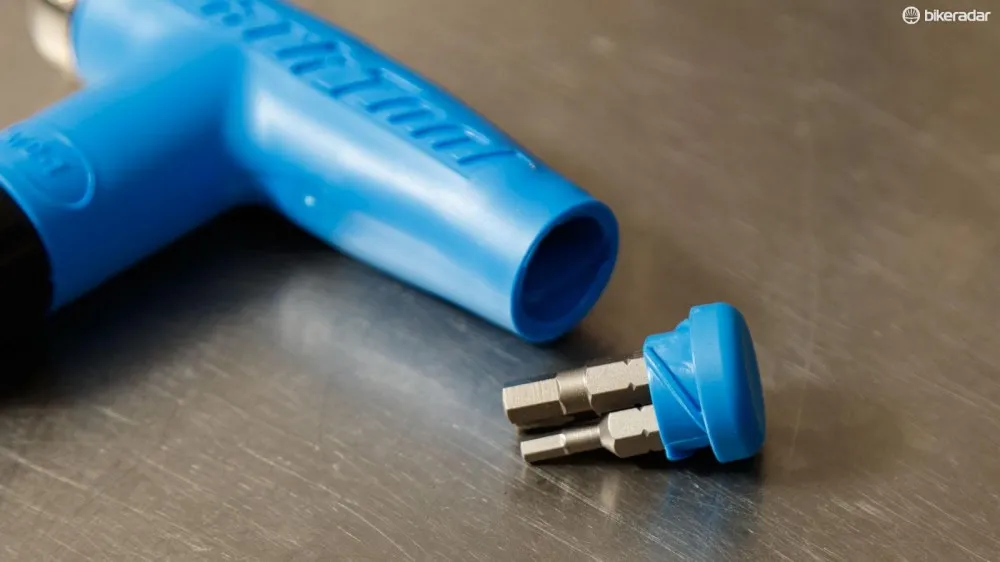
Bits sit hidden at the opposite end
Sitting at the opposite end of the handle is some clever bit storage. Turning the plastic cap a half turn reveals three common sized ¼” hex bits within. The fourth included bit sits in the tool’s magnetic bit driver. You likely won’t need more than the included 3, 4, 5mm hex and Torx 25 bits, but the ¼” size is widely considered standard and so replacements or additional sizes can be purchased from nearly any hardware store.
It’s all too common for cycling-specific torque wrenches to be made to a price point, typically using plastic internals as a result. The ATD clearly ignores its existing competitors and offers incredibly durable and positive feeling metal internals.
The PTD and ATD tools are assembled and calibrated in-house by Park Tool. Obviously accuracy of a torque wrench is key and the ATD proved consistent and precise when tested on our digital torque tester. For example, we got an average reading of 5.13nm with the ATD set to 5nm.More importantly though, this accuracy remained after putting this tool through some hard use.
This isn’t too surprising given that like a gauge, torque wrenches are typically most accurate in the middle range; reducing that range results in greater precision.
A feature we absolutely love of the ATD is how human error cannot influence the end torque. Here, the tool uses a cam-over design where it’ll continue clicking out once the desired torque is reached. Many other adjustable torque wrenches can still be turned further once the initial torque indicating click is given.
Additionally, the large and comfortable handle design fits in a way that ensures your hand placement doesn’t affect the end torque. This may sound unbelievable, but the peak torque of some wrenches does change depending on how the tool is held.
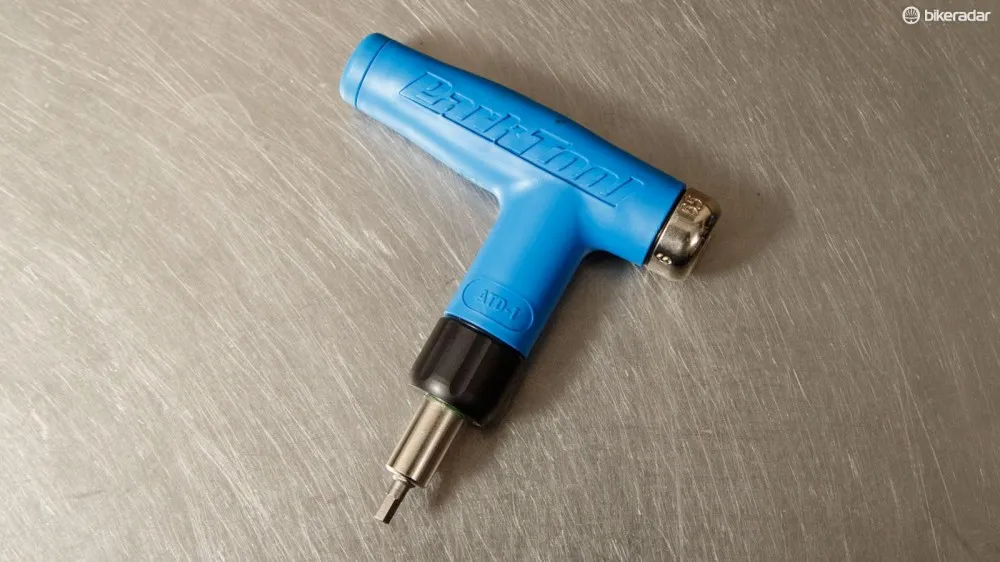
Such a large handle may create clearance issues on some seatpost designs
Of course, this new premium tool isn’t perfect. For one, its solid build leads to a 266g weight that makes it less practical for traveling with. Additionally, its large handle may prove too big in some situations such as adjusting some saddle clamps or integrated seatpost clamp designs.
Then there’s the price: at $73 / £60 / AU$120, it’s priced beyond anything else with such a limited torque range. For us, this price is justified with the high build quality and consistent accuracy over repeated use, and it’s certainly something that will eventually pay for itself under regular enthusiast or professional use. Whether you agree that this financial penalty is worth it is down to you.
Be sure to see how the Park Tool ATD-1 fared against 16 other cycling torque wrenches in our definitive torque wrench test.
